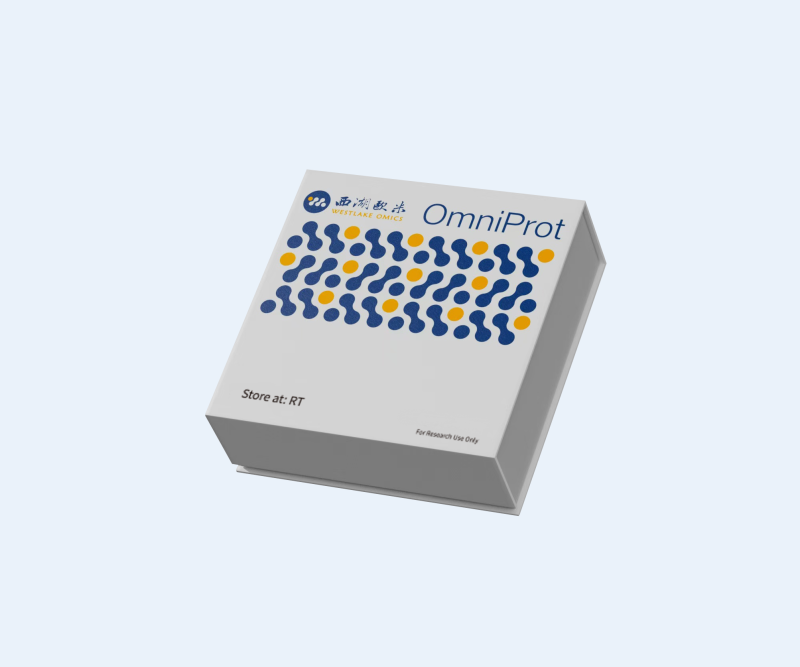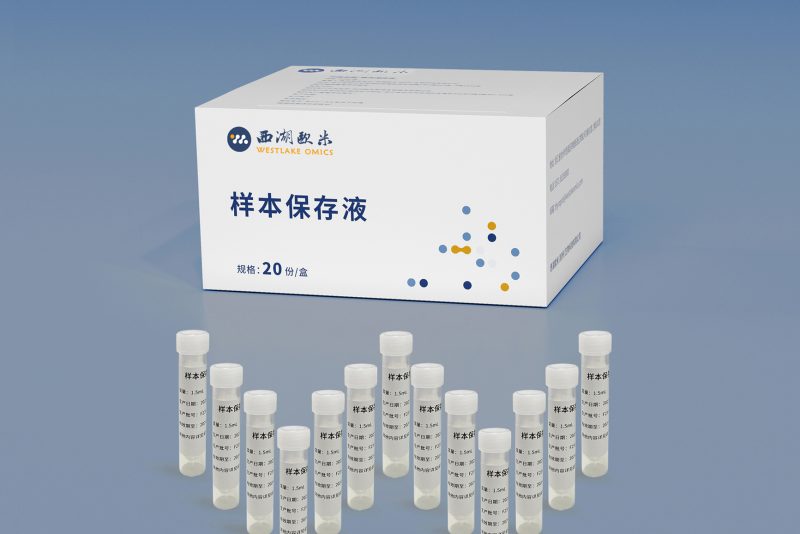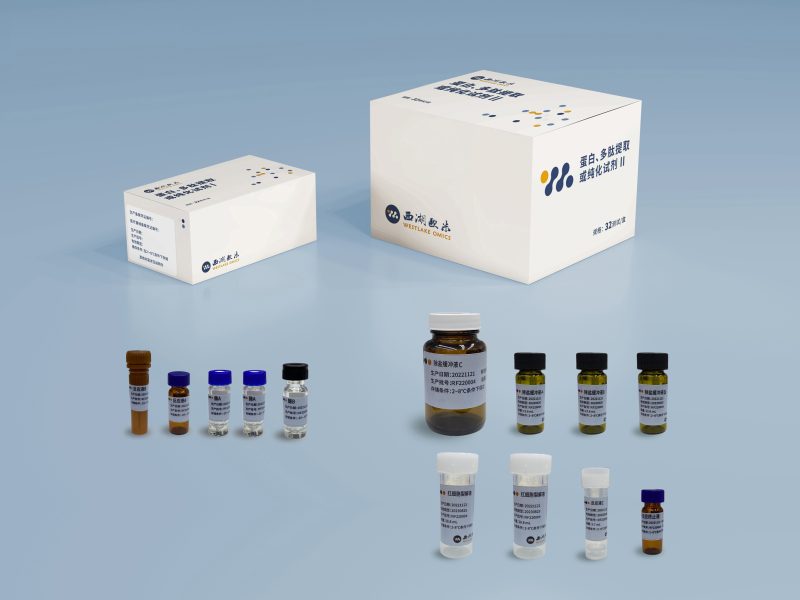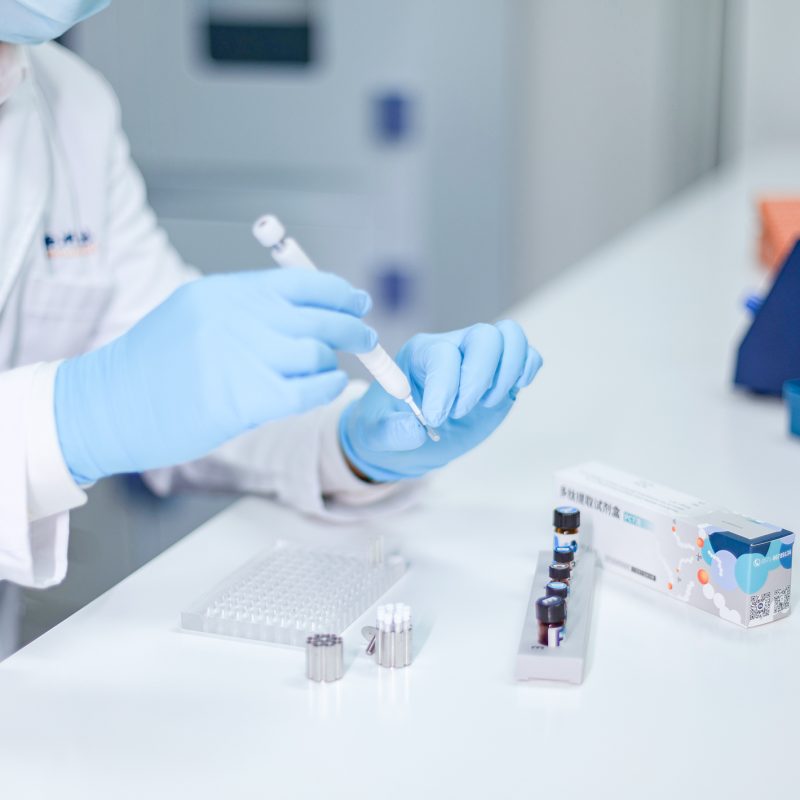Which organs are most injured after a COVID-19 Infection?
It was the world’s first detailed and systematic analysis of the responses in multiple key human organs to Covid-19 at the protein molecular level, which provided clues and was the basis for clinical practitioners and researchers to formulate treatment plans and develop new drugs and therapies.
5336 protein molecules were altered after infection with Covid-19.
Numerous clinical cases and studies showed that damages to organs such as the lungs were observed in Covid-19 patients. However, the majority of previous Covid-19 fundamental studies attempted to predict the impact of the virus on human organs with infected cell line models in the labs. Molecular pathological studies of multi-organ damages in severe Covid-19 cases were very limited, which made it difficult to understand the mechanism of the lethality and precisely treat the patients.
Led by Dr. Guo Tiannan, the Guomics Team in Westlake University and its partners collected tissue samples of seven organs, including lung, spleen, liver, heart, kidney, thyroid and testis from 19 patients who died of Covid-19. Microscopic pathological studies revealed diffuse alveolar injuries, pulmonary fibrosis, neutrophil infiltration and thrombosis in the lungs, white pulp atrophies in the spleen, fat metaplasia and in some cases infarctions in the liver, myocardial edema and interstitial lymphocyte infiltrations in the heart, and acute tubular injuries in the kidneys.
Studies at the molecular level then followed. Based on the mass spectrometry data and omics data analysis by Pressure Cycling Technology (PCT) and TMT labeled shotgun proteomic techniques, the team identified 11,394 human-derived protein molecules and mapped a multi-organ protein molecular atlas in severe/critical Covid deaths. 5336 proteins were altered compared to control tissue samples.
Among the seven categories of human organ tissues, no significantly altered proteins were identified in the red pulp of the spleen, while the largest number of altered proteins was found in the liver (N=1970), implying that the liver may have been the most damaged.
For the ACE2 protein (viral receptor angiotensin-converting enzyme 2, a protein that regulates blood pressure), which was the "culprit" of Covid-19’s entry into human body, the team found no significant difference in its amount in various organs of Covid-19 patients compared to non-Covid-19 patients. In contrast, another protein, tissue proteinase L (CTSL), which helped the virus enter cells, was significantly increased in the lungs of Covid-19 patients. This suggests that the expression level of ACE2 was not altered in Covid-19 deaths. It was simply a pathway for Covid-19 virus to enter the body, while CTSL may be a potential therapeutic target for blocking viral invasion.
Besides lungs, other organs such as livers and kidneys also showed early signs of fibrosis.
Schematic diagram of specific molecular changes associated with high inflammatory state and tissue damage in multiple organs after virus invasion. The red/green boxes with texts in black indicate clearly up/down-regulated proteins, respectively, the red/green boxes with texts in white indicate clearly activated/inhibited pathways, and the white boxes indicate unquantified or un-deregulated proteins.
The team continued with a systematic comparative study of the physiological functions, pathological patterns and proteomics of multiple organs and identified several pulmonary proteins that were altered, including proteins associated with viral proliferation, involved in the pathological process of pulmonary fibrosis and those involved in the degradation of viral restriction factors. Proteomics study showed that the lung and spleen exhibited an adaptive immune response suppression molecularly characterized by upregulation of immune checkpoint proteins and downregulation of T-cell enrichment proteins, which was corroborated by a decrease in T and B lymphocytes in the spleen.
Clinicopathologically, although only the lungs were presented with fibrotic lesions, the proteomic results showed that early signs of tissue fibrosis were also observed in the liver, kidneys and other organs, suggesting the need for prevention and early intervention for the possible sequelae of "multi-organ fibrosis" in recovered critical patients.
The clinical collaborators first reported in May 2020 that patients who died of Covid-19 had pathological changes in the testes such as germinal tubule damage, Leydig cell reduction and mild lymphocytic inflammation. But these were only at the "macro" level. What molecular changes were responsible for these damages? The Guomics team identified 10 proteins that were significantly altered in testicular tissue from Covid-19 patients, and they were strongly associated with inhibition of cholesterol synthesis, reduced sperm activity, and decreased Leydig cell-specific markers. Among them, Leydig cells are closely related to male androgen synthesis and secretion, suggesting that fertility may be affected in male patients.
Of course, these studies are based on tissue samples from Covid-19 deaths, and further studies are needed to determine whether the same changes occur in patients with mild and severe cases and whether such changes are reversible.
Guo Tiannan-Principal Investigator at Westlake University, Professor Hu Yu and Professor Xia Jiahong at the Union Hospital, Tongji Medical College, Huazhong University of Science and Technology, and Associate Research Fellow Zhu Yi at Westlake University are the co-corresponding authors of the paper. Professor Nie Xiu from the Union Hospital, PhD candidates Qian Liujia and Sun Rui from the Guomics, Huang Bo and Dong Xiaochuan from the Union Hospital, research assistant Xiao Qi from the Guomics, and Zhang Qiushi from Westlake Omics (Hangzhou) Biotechnology Co., Ltd are the co-first authors.
The research results come from the Westlake Laboratory and the Emergency Medicine Research Center of Westlake University, and are supported by the Union Hospital, Tongji Medical College, Huazhong University of Science and Technology, the Supercomputing Center of Westlake University, and the Westlake University Mass Spectrometry Platform. Tencent Foundation and Westlake Education Foundation also funded this project.
Which organs are most injured after a COVID-19 Infection?
It was the world’s first detailed and systematic analysis of the responses in multiple key human organs to Covid-19 at the protein molecular level, which provided clues and was the basis for clinical practitioners and researchers to formulate treatment plans and develop new drugs and therapies.
5336 protein molecules were altered after infection with Covid-19.
Numerous clinical cases and studies showed that damages to organs such as the lungs were observed in Covid-19 patients. However, the majority of previous Covid-19 fundamental studies attempted to predict the impact of the virus on human organs with infected cell line models in the labs. Molecular pathological studies of multi-organ damages in severe Covid-19 cases were very limited, which made it difficult to understand the mechanism of the lethality and precisely treat the patients.
Led by Dr. Guo Tiannan, the Guomics Team in Westlake University and its partners collected tissue samples of seven organs, including lung, spleen, liver, heart, kidney, thyroid and testis from 19 patients who died of Covid-19. Microscopic pathological studies revealed diffuse alveolar injuries, pulmonary fibrosis, neutrophil infiltration and thrombosis in the lungs, white pulp atrophies in the spleen, fat metaplasia and in some cases infarctions in the liver, myocardial edema and interstitial lymphocyte infiltrations in the heart, and acute tubular injuries in the kidneys.
Studies at the molecular level then followed. Based on the mass spectrometry data and omics data analysis by Pressure Cycling Technology (PCT) and TMT labeled shotgun proteomic techniques, the team identified 11,394 human-derived protein molecules and mapped a multi-organ protein molecular atlas in severe/critical Covid deaths. 5336 proteins were altered compared to control tissue samples.
Among the seven categories of human organ tissues, no significantly altered proteins were identified in the red pulp of the spleen, while the largest number of altered proteins was found in the liver (N=1970), implying that the liver may have been the most damaged.
For the ACE2 protein (viral receptor angiotensin-converting enzyme 2, a protein that regulates blood pressure), which was the "culprit" of Covid-19’s entry into human body, the team found no significant difference in its amount in various organs of Covid-19 patients compared to non-Covid-19 patients. In contrast, another protein, tissue proteinase L (CTSL), which helped the virus enter cells, was significantly increased in the lungs of Covid-19 patients. This suggests that the expression level of ACE2 was not altered in Covid-19 deaths. It was simply a pathway for Covid-19 virus to enter the body, while CTSL may be a potential therapeutic target for blocking viral invasion.
Besides lungs, other organs such as livers and kidneys also showed early signs of fibrosis.
Schematic diagram of specific molecular changes associated with high inflammatory state and tissue damage in multiple organs after virus invasion. The red/green boxes with texts in black indicate clearly up/down-regulated proteins, respectively, the red/green boxes with texts in white indicate clearly activated/inhibited pathways, and the white boxes indicate unquantified or un-deregulated proteins.
The team continued with a systematic comparative study of the physiological functions, pathological patterns and proteomics of multiple organs and identified several pulmonary proteins that were altered, including proteins associated with viral proliferation, involved in the pathological process of pulmonary fibrosis and those involved in the degradation of viral restriction factors. Proteomics study showed that the lung and spleen exhibited an adaptive immune response suppression molecularly characterized by upregulation of immune checkpoint proteins and downregulation of T-cell enrichment proteins, which was corroborated by a decrease in T and B lymphocytes in the spleen.
Clinicopathologically, although only the lungs were presented with fibrotic lesions, the proteomic results showed that early signs of tissue fibrosis were also observed in the liver, kidneys and other organs, suggesting the need for prevention and early intervention for the possible sequelae of "multi-organ fibrosis" in recovered critical patients.
The clinical collaborators first reported in May 2020 that patients who died of Covid-19 had pathological changes in the testes such as germinal tubule damage, Leydig cell reduction and mild lymphocytic inflammation. But these were only at the "macro" level. What molecular changes were responsible for these damages? The Guomics team identified 10 proteins that were significantly altered in testicular tissue from Covid-19 patients, and they were strongly associated with inhibition of cholesterol synthesis, reduced sperm activity, and decreased Leydig cell-specific markers. Among them, Leydig cells are closely related to male androgen synthesis and secretion, suggesting that fertility may be affected in male patients.
Of course, these studies are based on tissue samples from Covid-19 deaths, and further studies are needed to determine whether the same changes occur in patients with mild and severe cases and whether such changes are reversible.
Guo Tiannan-Principal Investigator at Westlake University, Professor Hu Yu and Professor Xia Jiahong at the Union Hospital, Tongji Medical College, Huazhong University of Science and Technology, and Associate Research Fellow Zhu Yi at Westlake University are the co-corresponding authors of the paper. Professor Nie Xiu from the Union Hospital, PhD candidates Qian Liujia and Sun Rui from the Guomics, Huang Bo and Dong Xiaochuan from the Union Hospital, research assistant Xiao Qi from the Guomics, and Zhang Qiushi from Westlake Omics (Hangzhou) Biotechnology Co., Ltd are the co-first authors.
The research results come from the Westlake Laboratory and the Emergency Medicine Research Center of Westlake University, and are supported by the Union Hospital, Tongji Medical College, Huazhong University of Science and Technology, the Supercomputing Center of Westlake University, and the Westlake University Mass Spectrometry Platform. Tencent Foundation and Westlake Education Foundation also funded this project.








